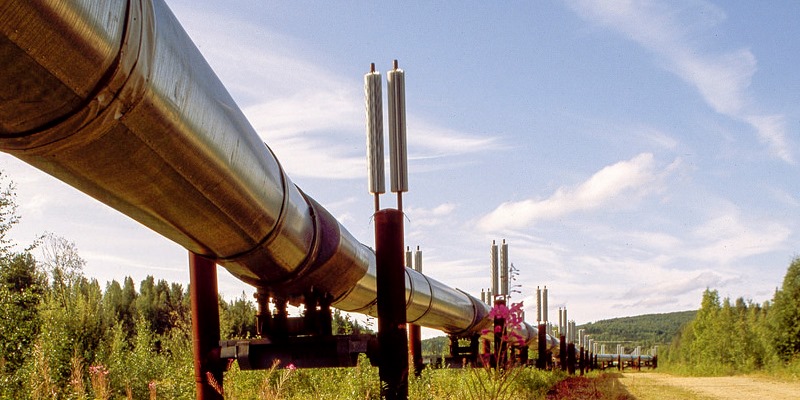Reconsider Energy East and get Canada off Saudi oil

Canada’s escalating spat with Saudi Arabia raises an obvious question. Why is Canada, sitting on the world’s third-largest oil reserves, importing some 87 thousand barrels of oil per day from Saudi Arabia, a country with a terrible civil rights record?
Saudi Arabia is some 9,625 kilometres from Quebec, where Saudi oil is imported to Canada. Wouldn’t it be nice if Eastern Canada got its oil from a democratic country with an excellent record on civil rights and environmental protection, like, say, Canada? It wouldn’t be hard. A simple pipeline would completely obviate Canada’s need to import oil from the Middle East.
TransCanada’s proposed (yet now cancelled) Energy East pipeline would have carried Canadian oil over about 4,500 km, using mostly existing pipeline capacity currently used to transport natural gas from Alberta to Ontario and Quebec. With a capacity to carry 1.1 million barrels of oil per day, the pipeline would have dwarfed what Canada imports from Saudi Arabia (not to mention Algeria’s 85 thousand barrels per day and Nigeria’s 74 thousand barrels per day). So what happened to it?
In October 2017, TransCanada withdrew its application from the National Energy Board (NEB) for the proposed $15.7 billion Energy East and Eastern Mainline pipeline projects—about five months after the NEB announced that the government would consider “upstream” and “downstream” greenhouse gas emissions in the project evaluation process. The new upstream/downstream rule targets greenhouse gases emitted during oil production (not transportation) and after the oil leaves the pipeline and is refined and consumed (again, nothing to do with TransCanada’s planned oil transportation via pipeline).
Two studies by the Canadian Energy Research Institute (CERI) document the potential benefits of building Energy East. In 2014, CERI estimated the project would generate an additional $34 billion to the GDP, an additional 321,000 one-year/full-time equivalent jobs across Canada in construction and operation, and an additional $7.6 billion in total tax revenues for Canada. In a separate 2018 report, CERI models the costs and benefits of displacing imported oil with Canadian oil. This “made in Canada” scenario estimates refinery cost-savings of $23 million per year while displacing 100 per cent of foreign oil (including from the Saudis). CERI also estimates that using Canadian oil rather than imported oil would lower greenhouse gas emissions by 2 million tonnes of carbon-dioxide equivalent per year.
In any sane world, Canada, with oil reserves estimated at 171 billion barrels (ten per cent of the world’s total reserves), would not need to import oil from foreign powers with strong records of religious oppression, gender oppression, international destabilization, public beheadings and other activities Canadians shouldn’t support with their oil and gasoline purchases. Unfortunately, we’re not in that sane world.
Rather than looking at the failure of Energy East, and simplifying (and clarifying) environmental assessment to invite investment in such projects, the Trudeau government took an already onerous and somewhat arbitrary environmental assessment process and made it… more onerous and arbitrary.
While promising to streamline environmental assessment and make it more “scientific,” the government’s new criteria for energy projects includes consideration of “gender” impacts and use of the “traditional knowledge” of Canada’s Aboriginal people. Neither of these requirements lends itself to rigorous definition.
When CEPA, the Canadian Energy Pipelines Association, commented on the proposed revisions to the environmental assessment process, it argued that Bill C-69 (currently under House review) could not “…achieve greater certainty, clarity, and predictability required for investment in new linear infrastructure projects.” In fact, “CEPA does not see anything within the Impact Assessment Act that will attract energy investment to Canada.”
It’s time for Ottawa to take seriously its responsibly to attract investment to Canada for projects such as Energy East by reforming its review processes to simplify, clarify, accelerate and bring transparency to projects. Ideally, Queen’s law professor Bruce Pardy argues, a rule-of-law system would replace arbitrary assessment, establishing firm performance metrics that, when met, allow projects to proceed.
Canada’s limited capacity to move oil to both the East and West Coast is costing Canadians billions of dollars per year, and transferring large chunks of that money into the hands of despots. Our governments must do whatever’s needed to break Canada’s oil transport bottlenecks.

